May 21, 2025 | 03:36 GMT +7
May 21, 2025 | 03:36 GMT +7
Hotline: 0913.378.918
May 21, 2025 | 03:36 GMT +7
Hotline: 0913.378.918
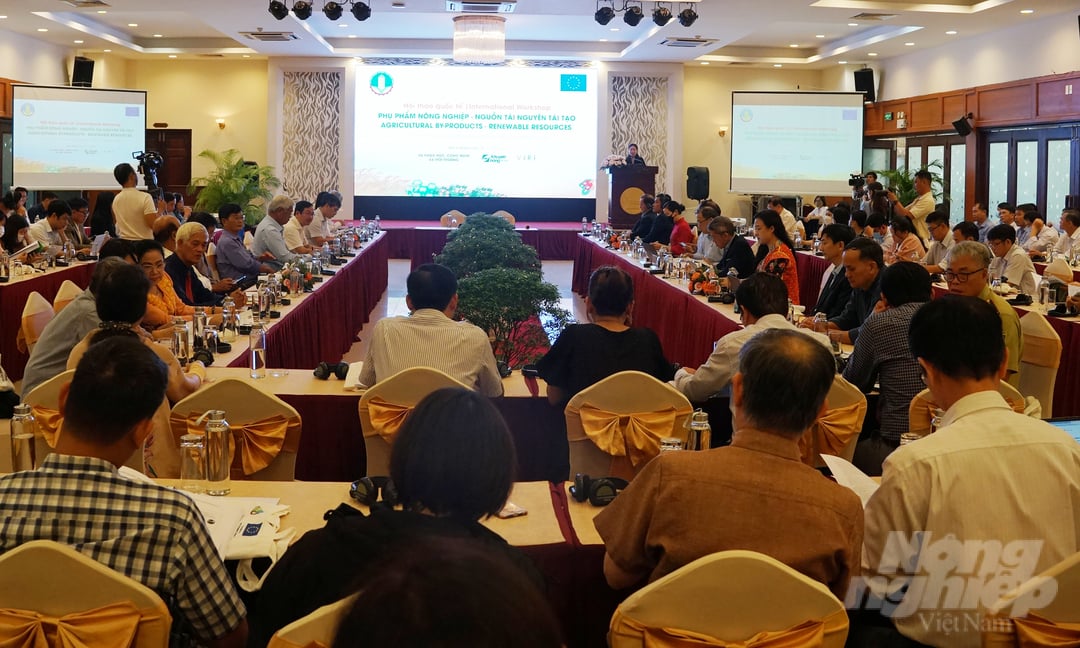
Overview of International Workshop "Agricultural byproducts -renewable resources." Photo: Nguyen Thuy.
Under the auspices of the EU, on September 28 MARD, in partnership with the "Promotion of supply and demand of Eco-Fair Agri-food processing products in Vietnam" Project, hosted the International Workshop "Agricultural byproducts -renewable resources."
According to Ms. Nguyen Thi Thanh Thuy, Director of the Department of Science, Technology, and the Environment (MARD), the growth rate of Vietnam's agriculture sector has been stable and sustainable despite a fall over some periods by the general trend. In 2021, agroforestry-fishery exports hit a record high of USD 49.6 billion. In the first half of 2022, agroforestry-fisheries exports reached USD 27.88 billion, an increase of 13.9%; the target for 2022 is USD 55 billion.
However, agricultural production creates a vast quantity of byproducts that, without effective management, would be detrimental to the environment and result in the depletion of organic resources.
Focusing just on output growth in the agricultural production process, we ignore excess items such as organic fertilizer. Multiple production facilities are fragmented, resulting in the loss of agricultural leftovers and animal waste, which contribute to environmental contamination.
The excessive use of inorganic fertilizer and plant protection chemicals in agriculture, as well as the rising volume of animal waste, pose a danger to environmental quality. Agriculture's rice cultivation, fruiter cultivation, aquaculture, and animal production generate hundreds of tons of organic waste that might serve as renewable resources for agricultural production and other fields.
These resources have not yet been identified to be exploited efficiently and for the intended purpose, hence fostering value addition for the agricultural production value chain "said Ms. Thuy.
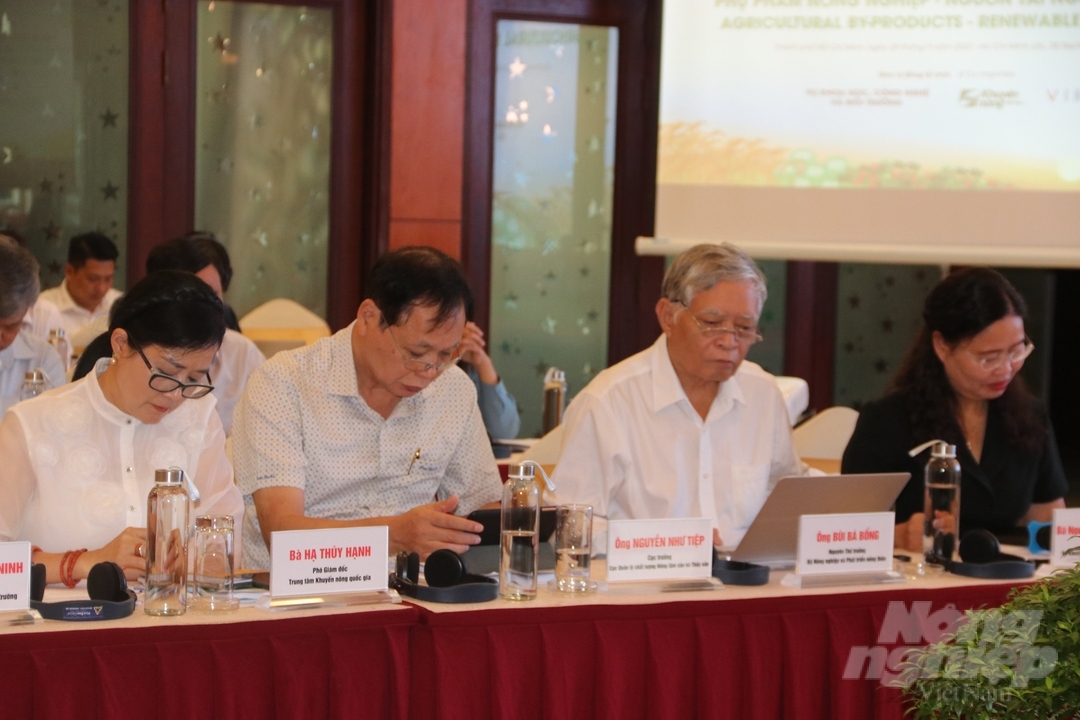
The workshop features leaders and former leaders of Departments and agencies under the Ministry of Agriculture and Rural Development. Photo: Nguyen Thuy.
Dr. Nguyen Huu Ninh, Deputy Director of the Department of Science, Technology, and Environment, cited MARD's statistics indicating that livestock production consists of approximately 5-6 million households engaged in husbandry and 23,500 concentrated farms producing 84.5 million tons of waste annually, of which only 20 percent were effectively used to produce biogas, fertilizer, vermicompost, and fish feeds, while the remaining 80 percent were discarded to the environment.
Only around 10 percent of agricultural wastes are used as on-site fuel, 5 percent as industrial fuel, and 3 percent as animal feed; more than 80 percent have been discharged directly into the environment or burnt, resulting in environmental degradation.
In terms of adaptation, agriculture is one of the main causes of climate change, since it contributes 18 percent of global greenhouse gas emissions. By 2030, 120 million tons of CO2 are expected to be produced, with 50 million tons coming from the rice business.
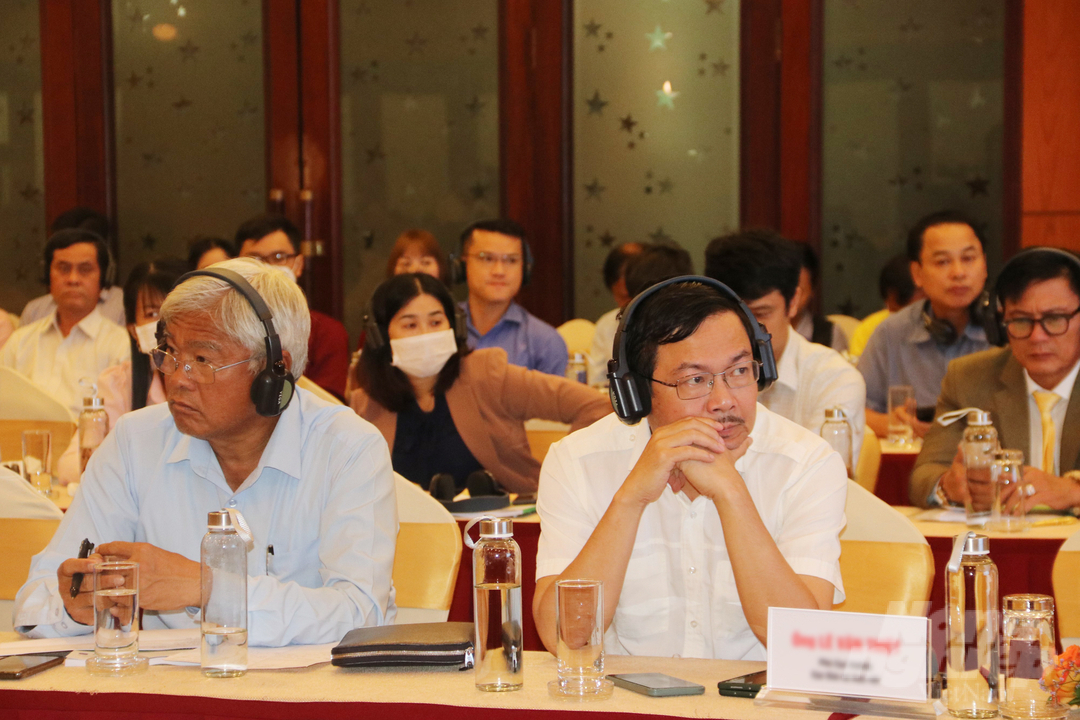
Mr. Nguyen Ngoc Thach, Editor-in-Chief of Vietnam Agriculture News. Photo: Nguyen Thuy.
According to Dr. Ninh, the entire volume of byproducts in the country in 2020 exceeded 156.8 million tons, including 88.9 million tons of byproducts from crop harvesting and the processing of agricultural goods from the crop industry; 61.4 million tons of cow and poultry manure from the livestock business (representing 39.1%); 5.5 million tons from the forestry sector (representing 3.5%); and around 1 million tons from the fisheries sector.
In addition to agricultural wastes, unsellable poor-quality fruits become a massive waste that pollutes the environment.
Vietnam's forestry sector annually generates around 30 million cubic meters of logs, 3.4 million tons of bark, branches, and leaves, and 2.4 million tons of sawdust. These byproducts are utilized for tablet crushing, industrial alcohol production, biomass power generation, animal bedding, and organic fertilizers...
"This is considered a waste, as agricultural fertilizer is in high demand. To support the development of green growth agriculture, organic agriculture, eco-agriculture, and higher, zero-waste recirculating agriculture, a specific roadmap is required "explained Dr. Ninh.
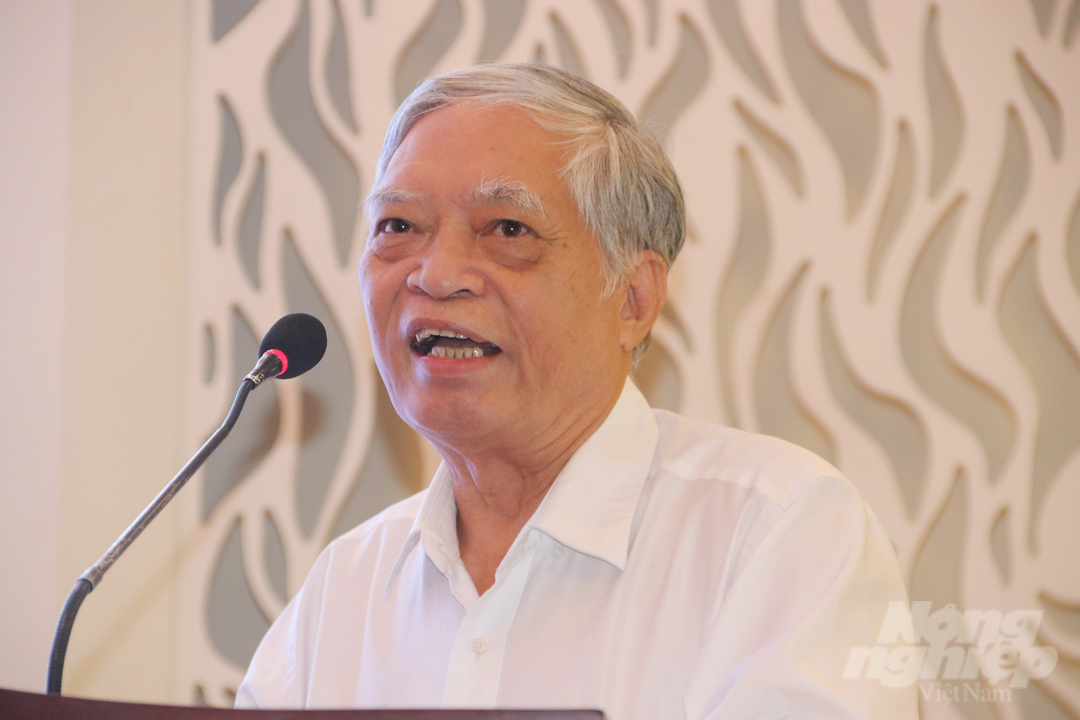
Assoc. Prof. Dr. Bui Ba Bong, former Deputy Minister of Agriculture and Rural Development. Photo: Nguyen Thuy.
According to former Deputy Minister of MARD, Assoc. Prof. Bui Ba Bong, the Netherlands is the second largest agricultural exporter in the world with 2 million hectares of arable land. It is a pioneer in circular agriculture because of its high chemical fertilizer-to-organic fertilizer conversion rate.
While Vietnam has a large number of agricultural leftovers, the rate of utilization to develop value-adding goods and prevent environmental damage remains low. Several initiatives and programs involving the exploitation of agricultural byproducts have been executed with many successful models, but the widespread application remains sluggish and inefficient.
The former leader of MARD proposed six angles to promote the widespread use of agricultural byproducts, "turning wastes into flowers," including transforming support policies according to a circular value chain; elevating the status of farmers; implementing circular agriculture even in small farming households, farms, and cooperatives; reusing invisible agricultural products through a circular production system; expanding good models of technology and renovation; and establishing appropriate policies for entrepreneurs.
Translated by Linh Linh

(VAN) Japan's grant aid project contributes to capacity building, promoting organic agricultural production, and fostering sustainable community development in Dong Thap province.
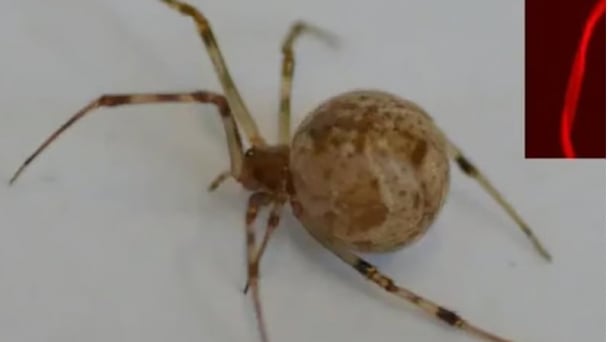
(VAN) For years, the CRISPR-Cas9 genome technology has been reshaping genetic engineering, a precision tool to transform everything from agriculture to medicine.
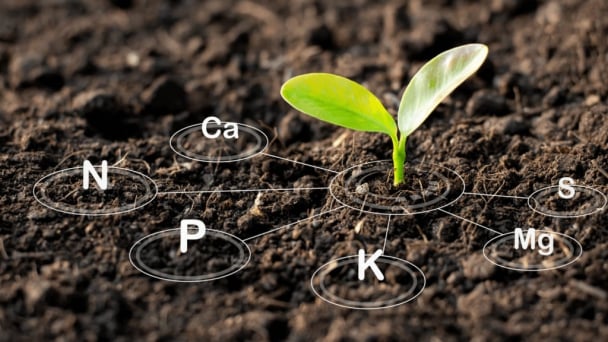
(VAN) Vietnam aims to become a 'leader' in the region in the capacity and managing effectively soil health and crop nutrition.
![Reducing emissions from rice fields: [Part 1] Farming clean rice together](https://t.ex-cdn.com/nongnghiepmoitruong.vn/608w/files/news/2025/05/05/z6509661417740_a647202949c539012a959e841c03e1d3-nongnghiep-143611.jpg)
(VAN) Growing clean rice helps reduce environmental pollution while increasing income, allowing farmers to feel secure in production and remain committed to their fields for the long term.
/2025/05/19/5136-1-144800_230.jpg)
(VAN) The Nghe An Provincial People's Committee has just approved the list of beneficiaries eligible for revenue from the Emission Reductions Payment Agreement (ERPA) in the North Central region for the year 2025.

(VAN) 14 out of 35 domesticated elephants in Dak Lak province have had their living conditions improved, with 11 of them currently participating in the non-riding elephant tourism model.

(VAN) Muong Nhe Nature Reserve hopes that being upgraded to a national park will lay the foundation for forest protection efforts to be carried out in a systematic, modern, and sustainable manner.